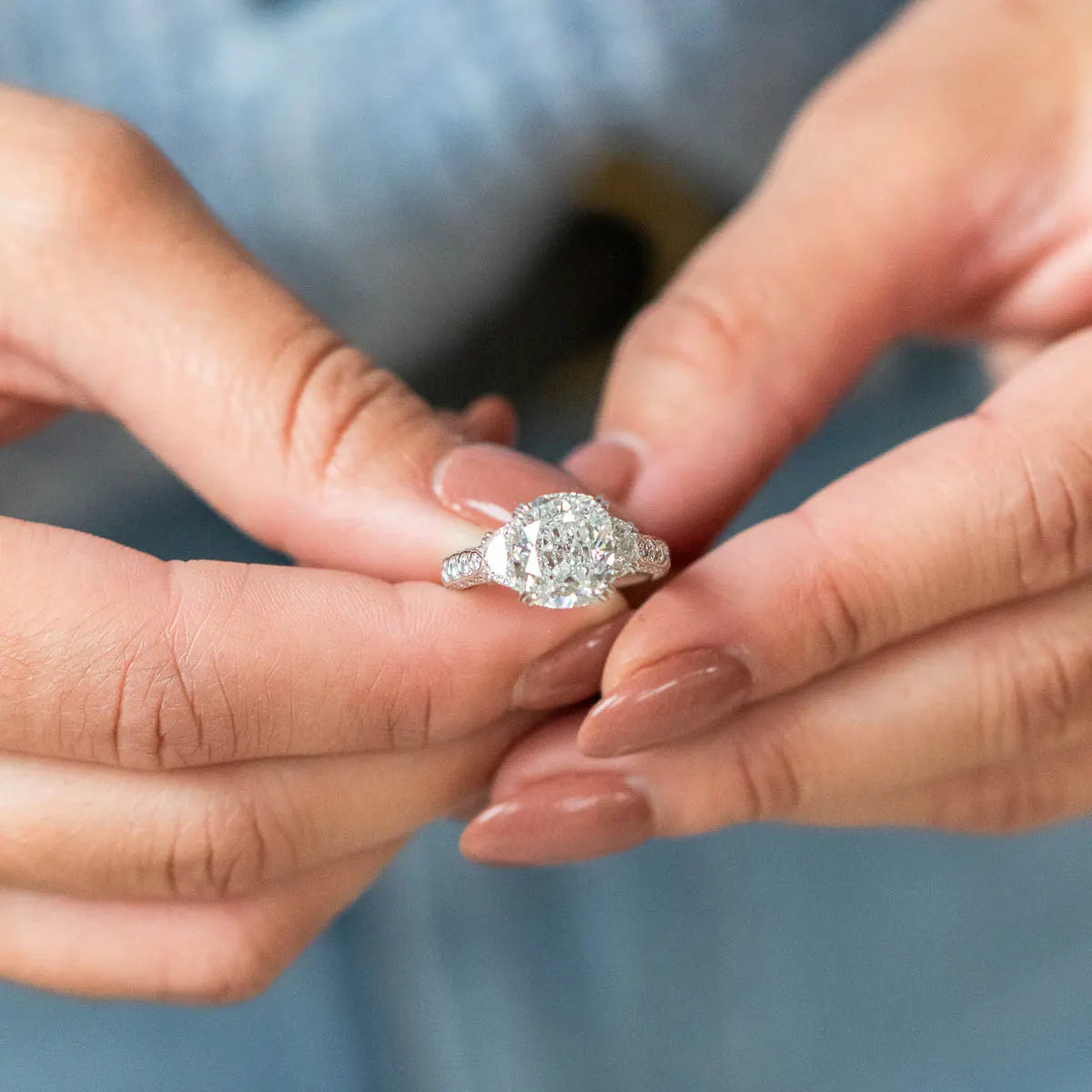
Platinum and gold are quite similar appearance, but have no shortage of differences. Many jewelry wearers find the silver toned colors more appealing, so when given the choice between white gold and platinum, which one should you choose? As you might expect, each has its own unique qualities in composition, durability, and price, so let’s look at each…
Platinum
The word “platinum” comes from the Spanish phrase “platina del Pinto,” which refers to the “small silver beads of the Pinto River” in Colombia. Gold miners of the 18th century tossed the beads back into the river, believing them to be worthless. That, of course, was not the case!
Composition Platinum is denser and heavier than white gold and is naturally white in color. This means it doesn’t have any extra alloys or plating to give it its silver-like beauty.
Durability Platinum is known as a “noble metal,” meaning that it’s extremely resistant to corrosion or tarnish. But it’s also soft and it can scratch easier than other metals. It’s common for people to get platinum rings polished annually or semi-annually to maintain the shine.
Price Those old Colombian gold miners had no idea how rare those “silver beads” actually were. Being both rare and dense means platinum will likely cost 25% more than white gold. Because there are no extra alloys or plating, you have one single, pure metal which will make it more expensive.
Our Favorites
From designer Harry Kotlar, this platinum engagement ring features a rarely seen “twist.” Like a delicate rope around the finger, the ring meets in the middle with a cushion cut diamond.
For a more traditional look, Harry Kotlar presents a platinum engagement ring with a petite diamond for a solid and confident look.

White Gold
Back in the day when alchemists were combining elements attempting to recreate (or improve) what nature had already made, two German scientists discovered what we know now as white gold. During WWII, platinum was being diverted for military use, and jewelers were looking for something “platinum-like” to sell. White gold was the solution!
Composition: Gold is naturally yellowish in color. To make what we call “white gold” requires mixing in other metals like rhodium, palladium, or silver. With white gold, you’re getting about 75% actual gold with a mixture of other metals and plating. This makes the metal both shinier and harder. White gold is popular choice for engagement rings (see some below).
Durability: Compared to platinum, white gold is stronger and stands up to more wear-and-tear. But like any precious metal, white gold is not immune to scratches. In fact, sometimes scratches are more noticeable requiring occasional polishing. As your ring is exposed to harsh chemicals from daily wear, you may find some yellowing showing through the silver requiring re-plating.
Price: You can expect the initial price to be a good 25% lower than platinum. But with the need for more frequent maintenance and re-plating some have found the savings to be negligible.
Our Favorites: You’ll love the big statement made by this delicate twist solitaire diamond engagement ring. It comes to us from the artisans at Eclat.
Both platinum and white gold come with many advantages (and maybe a couple of minuses). Whichever you choose, you’ll most certainly get many years of beautiful satisfaction. At Shreve & Co, we’re always happy to discuss your lifestyle and personal preferences and help you find something wonderful for you!


